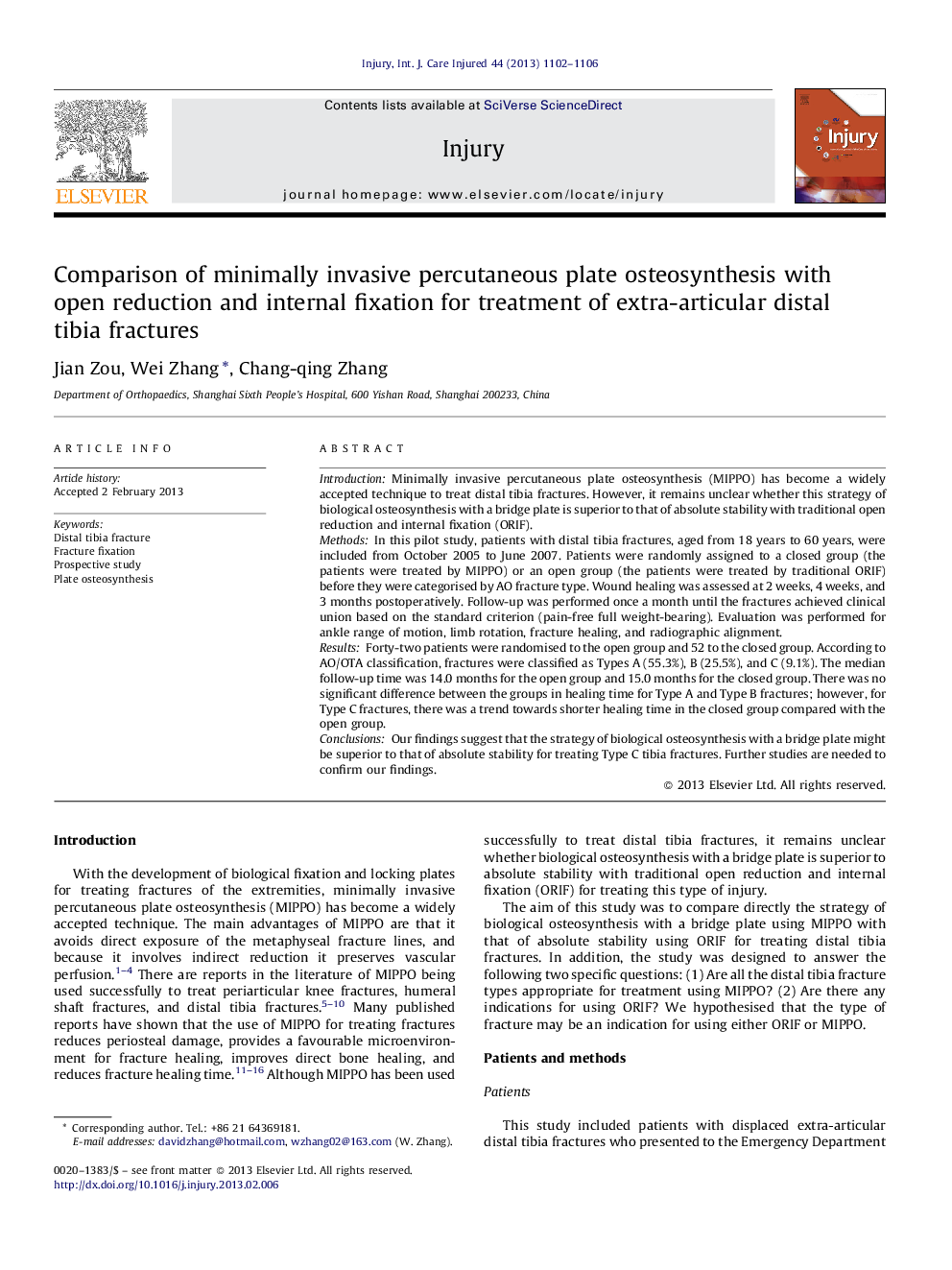| کد مقاله | کد نشریه | سال انتشار | مقاله انگلیسی | نسخه تمام متن |
|---|---|---|---|---|
| 6083663 | 1206001 | 2013 | 5 صفحه PDF | دانلود رایگان |
IntroductionMinimally invasive percutaneous plate osteosynthesis (MIPPO) has become a widely accepted technique to treat distal tibia fractures. However, it remains unclear whether this strategy of biological osteosynthesis with a bridge plate is superior to that of absolute stability with traditional open reduction and internal fixation (ORIF).MethodsIn this pilot study, patients with distal tibia fractures, aged from 18 years to 60 years, were included from October 2005 to June 2007. Patients were randomly assigned to a closed group (the patients were treated by MIPPO) or an open group (the patients were treated by traditional ORIF) before they were categorised by AO fracture type. Wound healing was assessed at 2 weeks, 4 weeks, and 3 months postoperatively. Follow-up was performed once a month until the fractures achieved clinical union based on the standard criterion (pain-free full weight-bearing). Evaluation was performed for ankle range of motion, limb rotation, fracture healing, and radiographic alignment.ResultsForty-two patients were randomised to the open group and 52 to the closed group. According to AO/OTA classification, fractures were classified as Types A (55.3%), B (25.5%), and C (9.1%). The median follow-up time was 14.0 months for the open group and 15.0 months for the closed group. There was no significant difference between the groups in healing time for Type A and Type B fractures; however, for Type C fractures, there was a trend towards shorter healing time in the closed group compared with the open group.ConclusionsOur findings suggest that the strategy of biological osteosynthesis with a bridge plate might be superior to that of absolute stability for treating Type C tibia fractures. Further studies are needed to confirm our findings.
Journal: Injury - Volume 44, Issue 8, August 2013, Pages 1102-1106
